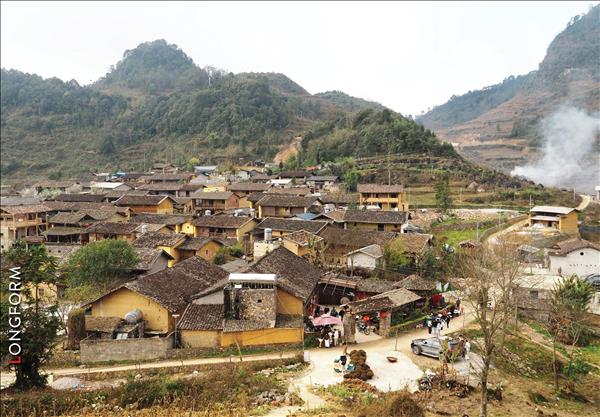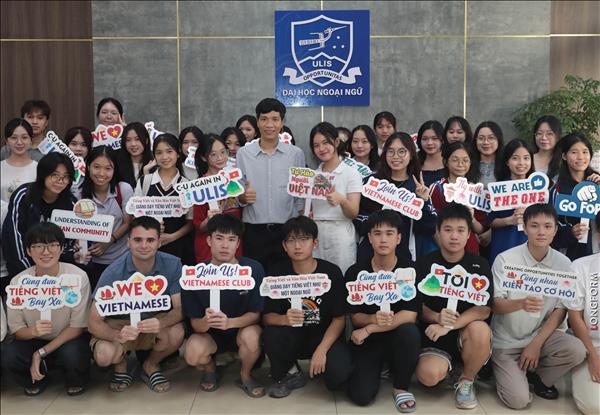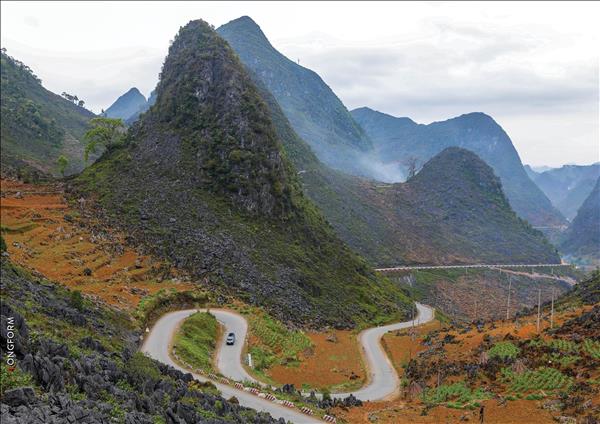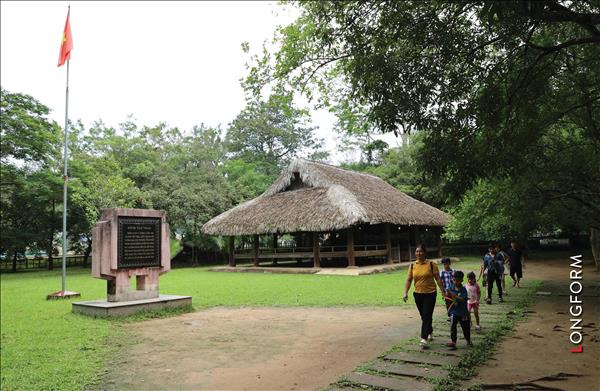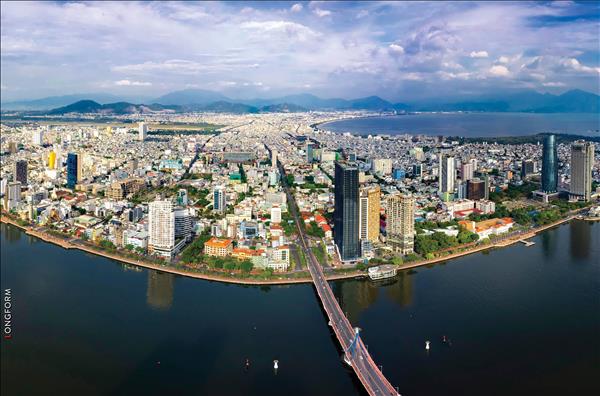Constructive Government for Sustainable Vietnamese Agriculture
In February, 2017, Prime Minister Nguyen Xuan Phuc visited and attended the inauguration of VinEco Farm Ha Nam, in Xuan Khe and Nhan Binh communes, Ly Nhan district, Ha Nam province. This shows that the government leader has placed special importance on the development of hi-tech agriculture and wants to send a message that the government encourages and promotes the participation of private enterprises in hi-tech farming activities.
The Prime Minister has directed the banking system to give a 100,000 billion dong package in support of enterprises participating in hi-tech farming with the interest rate 0.5% - 1.5% which is lower than the market interest rate. According to the banking system’s report, by July the money poured into this endeavor had accounted for about 1/3 of the financial support package, equivalent to nearly 32, 000 billion dong.
So far, throughout Vietnam, many hi-tech farming zones have been planned, started and put into production, thus giving the initial results. The images of Israeli and European hi-tech farming fields are no longer strange to Vietnamese farmers. Minister of Agriculture and Rural Development Nguyen Xuan Cuong revealed: “Never before has society shown concern for agriculture like it does now when enterprises and big economic groups have invested in agriculture and rural development. This development brings in science, technology and technical advances for development of hi-tech agriculture”.
The Hi-Tech Farming Fields of VinEco
Learning from Israel’s successful agricultural models such as Kibbutz (agricultural villages) and Moshav (form of privately owned enterprises in the countryside), Vietnam is boosting the vigorous involvement of big economic groups in order to create Moshav and Kibbutz models “made in Vietnam”.
In order to actually feel the change of Vietnamese agriculture, we went to see what has happened at VinEco Farm Tam Dao ( the VinEco Agricultural Production Investment and Development Company Ltd., is a member of Vingroup), which has been built after the model of privately owned enterprises in the countryside.
At 4.30am., the farmers start their day. This is the time that teams gather to assort vegetables and fruits. They are allowed to work only two hours plus, with strict labor discipline and working styles to ensure labour efficiency.
Being the advance unit in the development of Vietnamese agriculture towards large-scale mechanisation, VinEco has successfully applied the model of Israeli agriculture, creating a source of green, clean and safe products. The VinEco Tam Dao greenhouse covers an area of 5.5ha, using the technology of Teshuva Agricultural Projects (TAP, Israel). This is a fully automatic technology, which ensures the optimum conditions of water, nutrition and oxygen contents for plants.
Recently many big economic groups and enterprises of Vietnam have invested in the domain of hi-tech farming, such as the TH True Milk and Vinamilk. They have applied genetic technology to raising milk cows with a high yield. Truong Hai group has established two seed research institutes in Long An and Thai Binh with a chain of organic fertilizer plants, farm equipment and manufacturing factories.
To the Supply Chain
One of the typical “made-in-Vietnam” Moshav models when building an enclosed value chain is the hi-tech farming model of Vingroup with VinEco clean vegetables. At present, VinEco has introduced more than 300 types of rich products with the output of nearly 100tonnes/day, which have been sold in the supermarket chain of VinMart and VinMart + in all provinces and cities.
The second trend of agricultural investment is the trend of building the “made-in-Vietnam” Kibbutz agricultural village models. Symbolising this trend is Da Lat vegetable and flower “kingdom”. A Potato-Vegetable-Flower Research Centre has been set up in Da Lat, which specialises in research, and application of, hi-tech farming solutions such as tissue culture, new breed creation and production cooperation. This contributes to making Da Lat the vegetable and flower “kingdom” of Vietnam with many export products meeting international standards.
According to the latest statistical figures of the Ministry of Agriculture and Rural Development, the agricultural, forestry and fishery export turnover of the first eight months of this year reached 23.66 billion US dollars, up by 13.5% over the same period last year.
After years of looking for the answer to the development of Vietnamese agriculture, which has, by nature, been valued as having numerous potentials and advantages the answer has been found. Now, with high technology, the potentials and advantages of Vietnamese agriculture can be made full use of, contributing to the building of an agriculture of comprehensive development towards modernisation.
Story: Thao Vy
Photos: Tran Thanh Giang, Nguyen Luan, Thong Nhat & Vineco’s Files
In February, 2017, Prime Minister Nguyen Xuan Phuc visited and attended the inauguration of VinEco Farm Ha Nam, in Xuan Khe and Nhan Binh communes, Ly Nhan district, Ha Nam province. This shows that the government leader has placed special importance on the development of hi-tech agriculture and wants to send a message that the government encourages and promotes the participation of private enterprises in hi-tech farming activities.
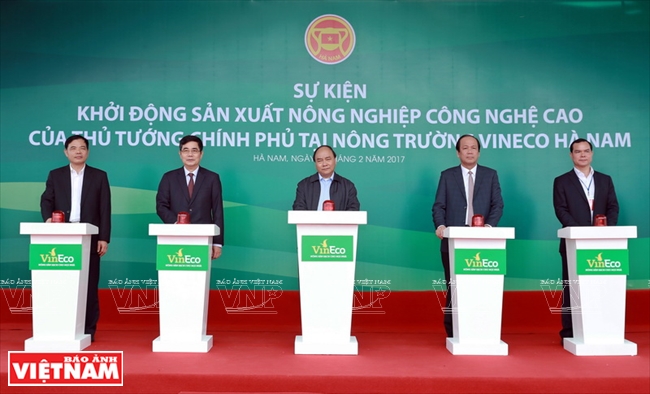 Prime Minister Nguyen Xuan Phuc launched high-tech agricultural production at a VinEco farm in the northern province of Ha Nam on February 2. Photo: Thong Nhat/VNA |
The Prime Minister has directed the banking system to give a 100,000 billion dong package in support of enterprises participating in hi-tech farming with the interest rate 0.5% - 1.5% which is lower than the market interest rate. According to the banking system’s report, by July the money poured into this endeavor had accounted for about 1/3 of the financial support package, equivalent to nearly 32, 000 billion dong.
So far, throughout Vietnam, many hi-tech farming zones have been planned, started and put into production, thus giving the initial results. The images of Israeli and European hi-tech farming fields are no longer strange to Vietnamese farmers. Minister of Agriculture and Rural Development Nguyen Xuan Cuong revealed: “Never before has society shown concern for agriculture like it does now when enterprises and big economic groups have invested in agriculture and rural development. This development brings in science, technology and technical advances for development of hi-tech agriculture”.
The Hi-Tech Farming Fields of VinEco
Learning from Israel’s successful agricultural models such as Kibbutz (agricultural villages) and Moshav (form of privately owned enterprises in the countryside), Vietnam is boosting the vigorous involvement of big economic groups in order to create Moshav and Kibbutz models “made in Vietnam”.
In order to actually feel the change of Vietnamese agriculture, we went to see what has happened at VinEco Farm Tam Dao ( the VinEco Agricultural Production Investment and Development Company Ltd., is a member of Vingroup), which has been built after the model of privately owned enterprises in the countryside.
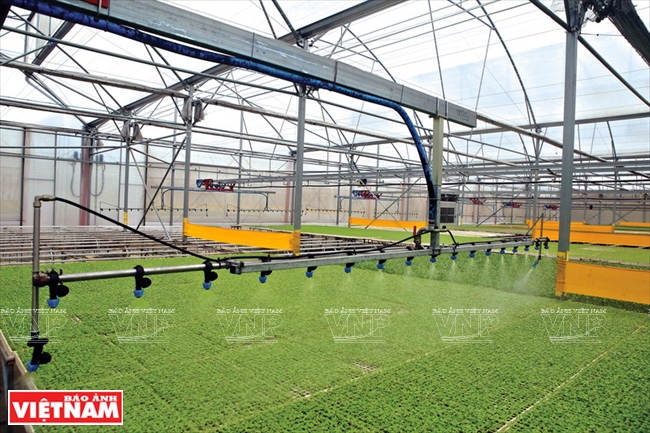 Auto watering system at VinEco farm which helps increase productivity. Photo: Thanh Giang/VNP 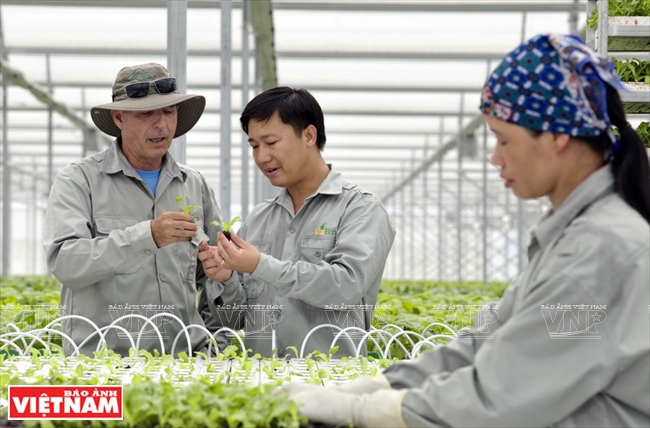 VinEco Tam Dao farm applies hydroponic technology from Israel. Photo: VinEco’s file Vegetable production with hydroponic technology. Photo: Thanh Giang/VNP 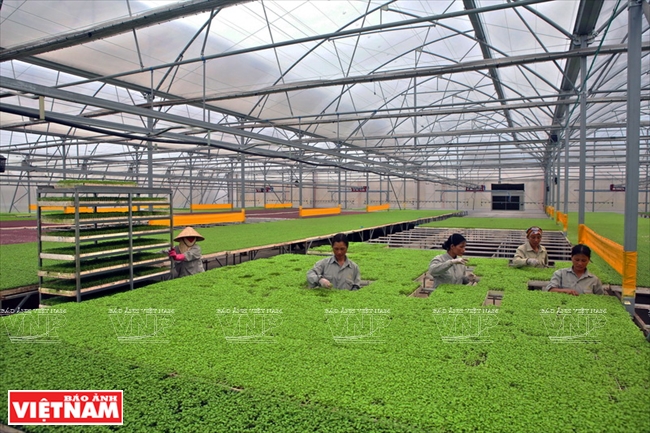 Israeli hydroponic technology being applied at VinEco Tam Dao. Photo: Thanh Giang/VNP 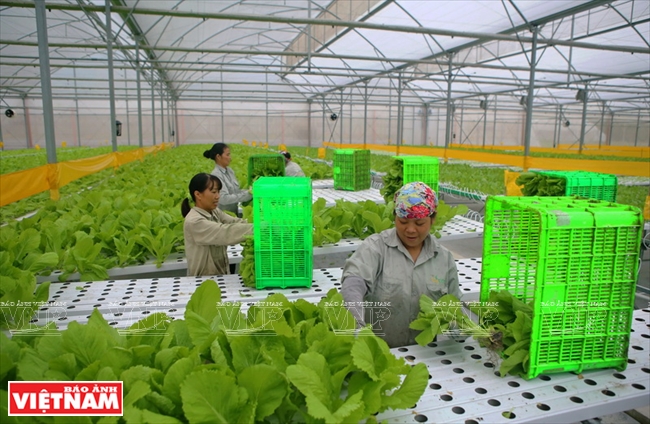 Havesting vegetables at VinEco Tam Dao. Photo: Thanh Giang/VNP 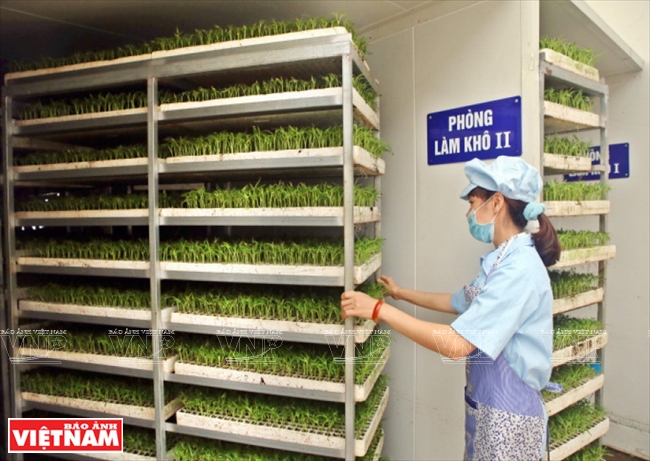 Drying vegetables before packaging. Photo: Thanh Giang/VNP 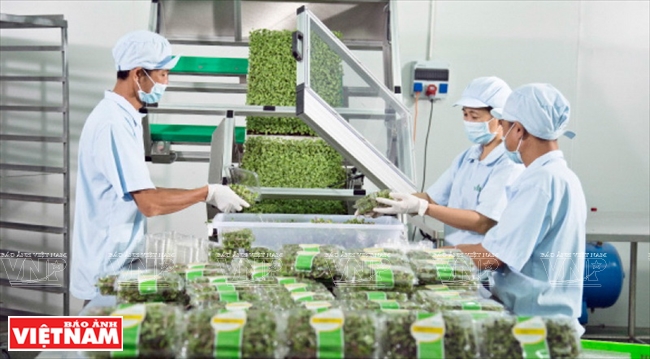 After harvesting, vegetables are packaged. Photo: VinEco’s file 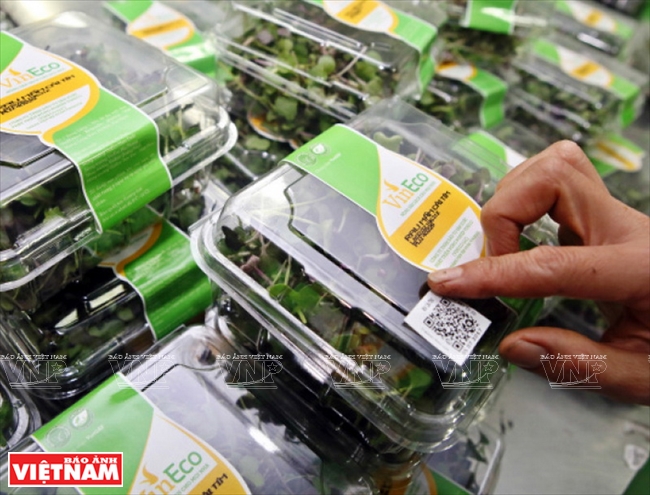 Vegetable products branded VinEco. Photo: Thanh Giang/VNP 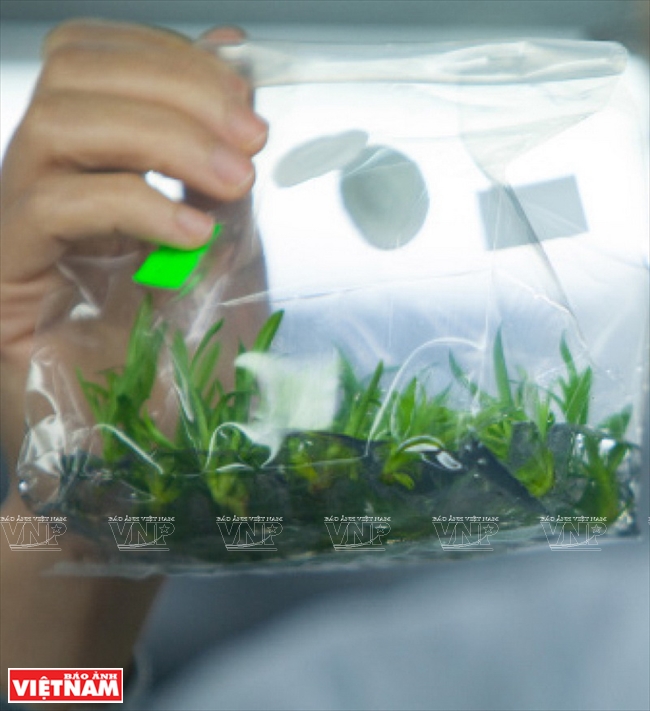 Monitoring the tissue culture at the Potato-Vegetable-Flower Research Centre in Da Lat. Photo: Nguyen Luan/VNP Checking the tissue culture at Da Lat Flower Forest Biotechnology Corporation. Photo: Nguyen Luan/VNP |
At 4.30am., the farmers start their day. This is the time that teams gather to assort vegetables and fruits. They are allowed to work only two hours plus, with strict labor discipline and working styles to ensure labour efficiency.
| Having been involved in agricultural since March 2015, VinEco has a total investment capital of 4,000 billion dong, a staff of 1,000 and three big production regions in the North, the South and Lam Dong with 14 farms which have been or are going to be put into production. |
Recently many big economic groups and enterprises of Vietnam have invested in the domain of hi-tech farming, such as the TH True Milk and Vinamilk. They have applied genetic technology to raising milk cows with a high yield. Truong Hai group has established two seed research institutes in Long An and Thai Binh with a chain of organic fertilizer plants, farm equipment and manufacturing factories.
To the Supply Chain
One of the typical “made-in-Vietnam” Moshav models when building an enclosed value chain is the hi-tech farming model of Vingroup with VinEco clean vegetables. At present, VinEco has introduced more than 300 types of rich products with the output of nearly 100tonnes/day, which have been sold in the supermarket chain of VinMart and VinMart + in all provinces and cities.
The second trend of agricultural investment is the trend of building the “made-in-Vietnam” Kibbutz agricultural village models. Symbolising this trend is Da Lat vegetable and flower “kingdom”. A Potato-Vegetable-Flower Research Centre has been set up in Da Lat, which specialises in research, and application of, hi-tech farming solutions such as tissue culture, new breed creation and production cooperation. This contributes to making Da Lat the vegetable and flower “kingdom” of Vietnam with many export products meeting international standards.
According to the latest statistical figures of the Ministry of Agriculture and Rural Development, the agricultural, forestry and fishery export turnover of the first eight months of this year reached 23.66 billion US dollars, up by 13.5% over the same period last year.
|
At UCA Mart, origin product code is stamped on every product.Photo: Thanh Giang/VNP 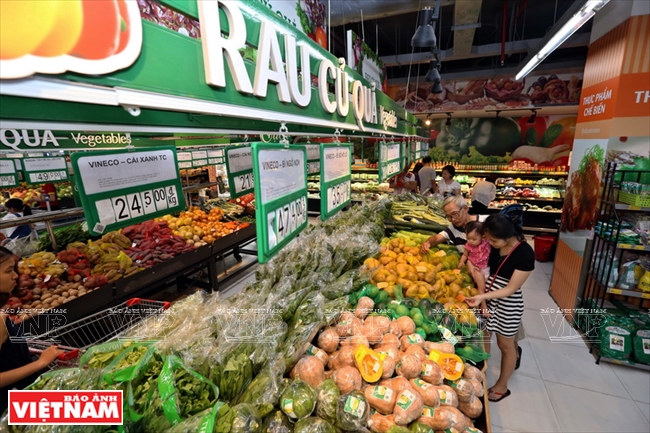 VinEco products are available at many supermarkets nationwide. Photo: Thanh Giang/VNP 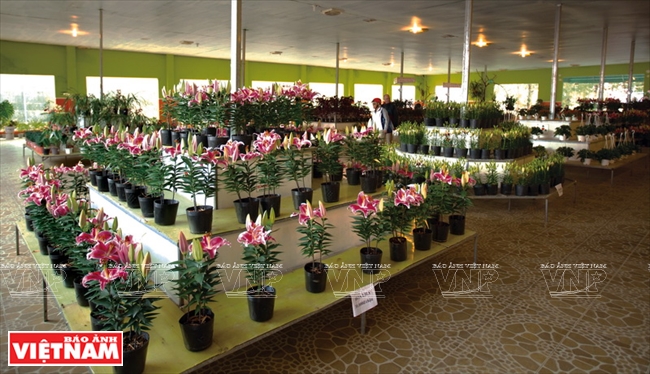 At present, flowers and vegetables from Da Lat are sold nationwide and exported to Japan, Taiwan and Malaysia. Photo: Nguyen Luan/VNP Harvesting agriculture products at Da Lat Flower Forest Biotechnology Corporation. Photo: Nguyen Luan/VNP |
After years of looking for the answer to the development of Vietnamese agriculture, which has, by nature, been valued as having numerous potentials and advantages the answer has been found. Now, with high technology, the potentials and advantages of Vietnamese agriculture can be made full use of, contributing to the building of an agriculture of comprehensive development towards modernisation.
|
So far, throughout the country, 29 hi-tech farming zones have been put into operation, attracting billions of dong invested by enterprises, thus creating commodity production zones covering some 400,000ha.
(Ministry of Agriculture and Rural Development)
|
Story: Thao Vy
Photos: Tran Thanh Giang, Nguyen Luan, Thong Nhat & Vineco’s Files

